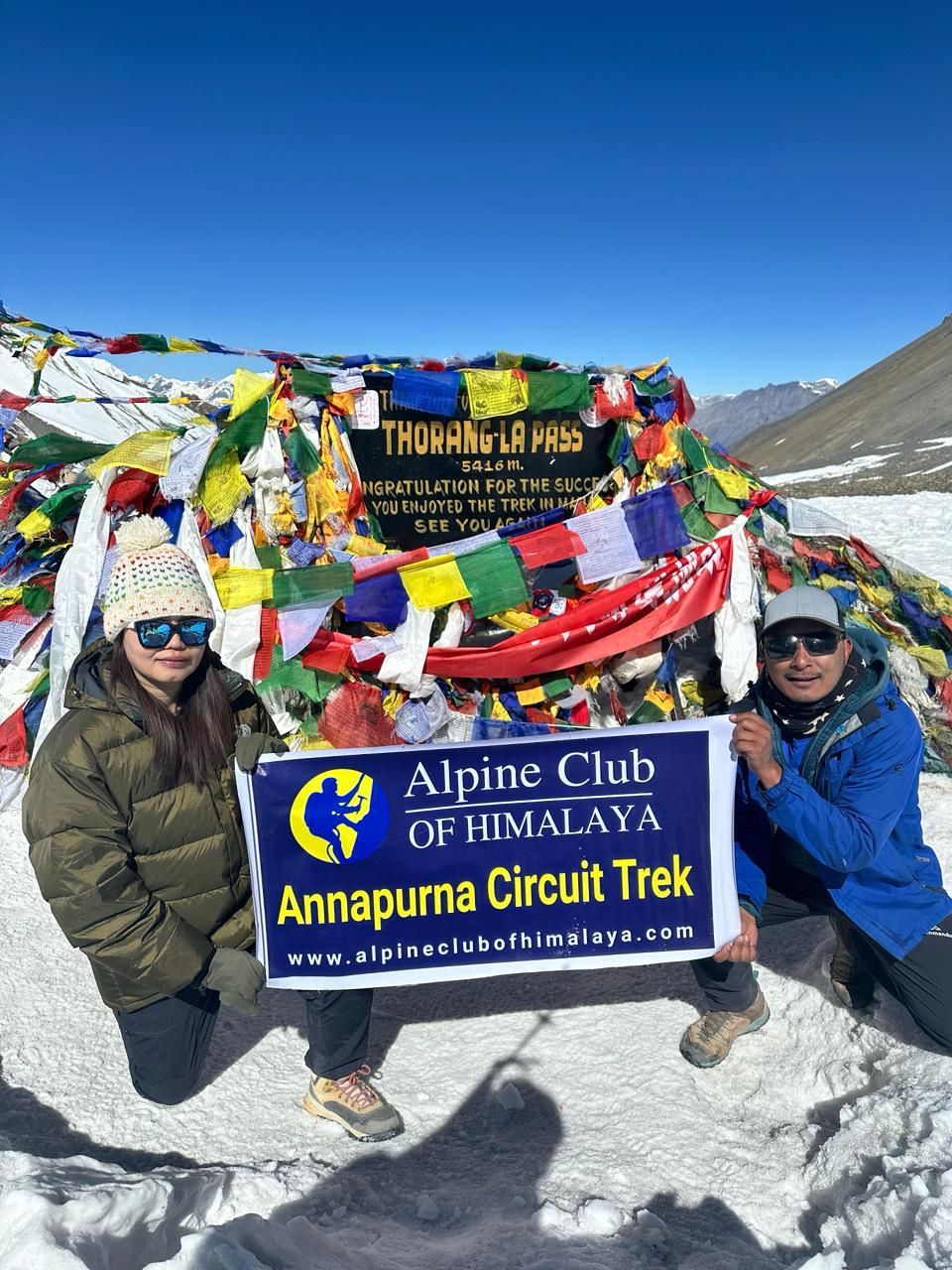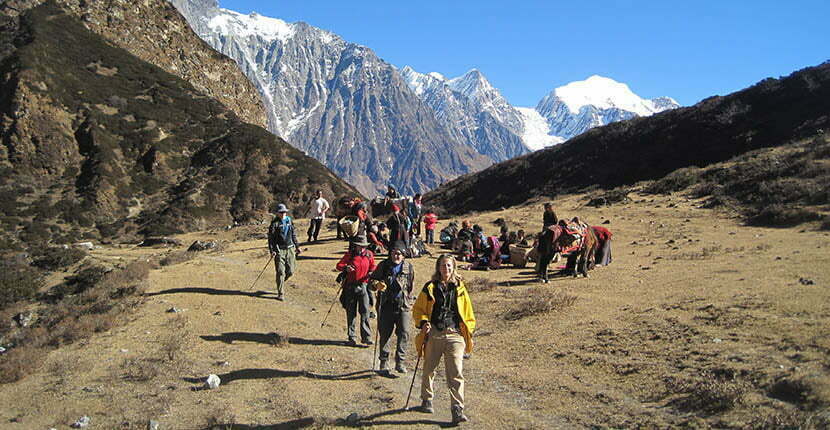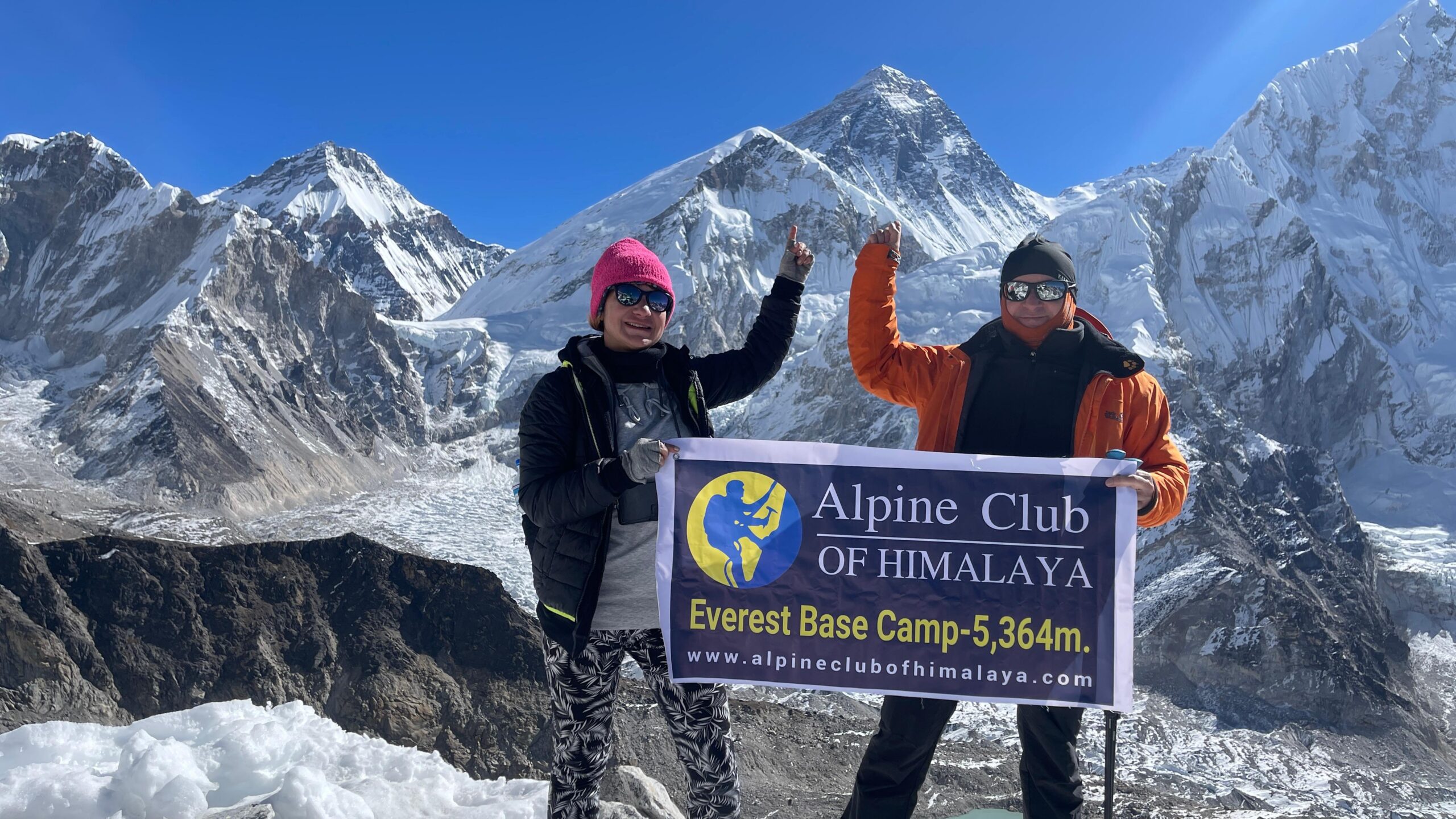Muslim Tour in Nepal: Muslim Tour in Nepal offers a perfect blend of cultural richness and natural beauty, designed especially for individuals of the Islamic faith and those eager to explore Nepalese culture and traditions within a short timeframe. This 3-night, 4-day journey begins with visits to two significant mosques in Kathmandu: Jame Masjid and Kashmiri Mosque. In Bhaktapur Durbar Square, you will experience historical monuments, old traditions, and unique stories. Nagarkot, located 35 km from Kathmandu, provides enchanting mountain views and a glimpse into Nepalese village life.
Kathmandu is renowned for its religious tolerance and cultural diversity, where all religions and religious sites are respected equally. It is a city where various religious communities live harmoniously, sharing festivals, cuisine, and valuing each other’s traditions.
Islam is the third largest religion in Nepal, with 4.4% of the population identifying as Muslims, known locally as Nepalese Muslims or Nepali Musalman. The Nepali Muslim culture and lifestyle are distinct from other Islamic and non-Islamic communities worldwide, celebrated for their uniqueness. Alpine Club of Himalayan, a pioneer in Muslim-friendly tours, created this package to introduce the unique culture, traditions, and lifestyle of Nepalese Muslims to the world, highlighting their beautiful diversity that deserves recognition and admiration.
History of Islam in Nepal
The Islamic community has been an integral part of Nepal for the last 600 years. Historical records indicate that the first Muslim settlements occurred during the reign of King Ratna Malla in the 15th century. These early Muslim inhabitants included Kashmiri traders, followed by Afghan, Persian, Arabian, and Indian Muslims.
The Kashmiri Muslims were initially invited to Nepal to boost trade, particularly in wooden crafts, carpets, shawls, and rugs. Indian and Afghan Muslims, on the other hand, were brought in to train Nepali soldiers in the use of weapons and ammunition. King Prithvi Narayan Shah particularly valued the Afghans’ and Indians’ expertise in manufacturing guns, cartridges, and cannons. Additionally, Indian Muslims served as musicians and specialists in perfumes and ornaments for the royal family, though some historians believe their primary role was to protect the king from rebellions.
Persian and Arabian Muslims were appointed for their linguistic skills and knowledge of international relations, contributing to diplomacy and maintaining international relationships due to their fluency in Arabic and Persian.
A significant influx of Indian Muslims occurred during the Sepoy Mutiny of 1857, when many migrated to Nepal’s Terai region. These migrants settled in the Terai, working as agricultural laborers or selling leather goods, thereby further enriching the cultural and economic tapestry of Nepal.
Some major attractions of muslim tour in Nepal are:
Kashmiri Mosque
The Kashmiri Mosque, also known as Pancha Kashmiri Takiya Masjid, is the oldest mosque in Nepal. Constructed in the 15th century by Kashmiri traders invited to Nepal during the reign of King Ratna Malla, the mosque was completed during the rule of King Pratap Malla. Located in Ghantaghar, Kathmandu, the mosque features three main complexes: a prayer hall, an annex, and a madrasah.
The mosque is renowned for its exquisite Islamic Mughal-style architecture. Within its premises are the tombs of Khwaja Gyasuddin Shah and Haji Mishkin Shah, adding to the historical and spiritual significance of the site.
Jame Mosque
During the unification of Nepal led by Prithvi Narayan Shah, Kashmiri traders played a crucial role by spying on the Malla rulers due to their close connections. In gratitude for their assistance, Prithvi Narayan Shah granted the Kashmiri traders permission to build a mosque. They established the Jame Mosque in Ghantaghar, Kathmandu. This mosque serves as a congregational place of worship where Muslims gather every Friday afternoon to pray in the name of Allah. The term “Jame Masjid” translates to “congregational mosque.”
Also known as Nepali Jame Masjid, it is the largest mosque in Kathmandu. The mosque, built in the Islamic Mughal style, showcases impressive architecture. It also features a pond with a fountain for ablution, enhancing its spiritual and aesthetic appeal.
Indra Chowk
Indra Chowk, once a small market square, is an ancient trade hub that thrived along the historic India-Tibet trade route. This vibrant street is a must for any Kathmandu itinerary. Indulge in a legendary Lassi at the heart of the square, a local favorite for generations.
Head to the eastern side and explore Raqi Bazaar, named after the Iraqi merchants who once traded here. This vibrant alleyway is lined with small shops run by Nepali Muslim communities, many carrying on ancestral traditions of craftsmanship. Find handmade ornaments and wooden handicrafts alongside stalls overflowing with colorful Potey beads.
Potey, traditionally known as ‘Sauvagya Chinna’, symbolizes prosperity in married life. Their presence in this Muslim-run market exemplifies the beautiful religious tolerance within Nepal’s communities. As you explore Indra Chowk’s well-preserved architecture, you’ll feel like you’ve stepped back in time, wandering the bustling streets of Medieval Kathmandu.
Bhaktapur Durbar Square
Step into a mesmerizing display of art and history at Bhaktapur Durbar Square. This UNESCO World Heritage Site (since 1979) boasts a captivating collection of pagodas and Shikhara-style temples clustered around a magnificent 55-window palace, built entirely of brick and wood.
Imagine a symphony of architectural elements – towering idols of ancient kings atop stone monoliths, watchful guardian deities within their sanctuaries, and intricate wood carvings adorning doorways, lintels, and windows. This is the magic of Bhaktapur Durbar Square.
King Yakshya Malla laid the foundation in 1427 AD, but it was King Bhupatindra Malla who truly transformed it into an “architectural heaven” during his reign. Originally boasting 99 courtyards, today only 13 remain, alongside 33 preserved temples.
Explore must-see landmarks like Bhandarkhal Chowk, the National Art Museum, the iconic 55-Window Palace, the Golden Gate, Lunhiti Chowk, the captivating statue of King Bhupatindra Malla, the five-roofed Nyatapola Temple, the Lapandegal courtyard, and the Durbar Square Hiti (water spout).
As you wander the streets, witness the artistic spirit of Bhaktapur come alive – local artisans skillfully crafting pottery, paintings, and intricate wooden artworks.
Nagarkot
It lies 35 kilometers east of Kathmandu at a cool 2,175 meters, Nagarkot is a haven for nature lovers and adventure seekers. This popular tourist destination is renowned for its awe-inspiring Himalayan panoramas. Witness the mighty peaks of eastern Nepal, including the crown jewel, Mount Everest, bathed in the golden hues of sunrise and sunset.
Nagarkot’s magic extends beyond Everest. Imagine a breathtaking vista of the Kathmandu Valley framed by a majestic array of Himalayan ranges: Annapurna, Manaslu, Ganesh Himal, Mahalangur (Everest), Numbur, Langtang, Jugal, and Rolwaling.
Calling all trekkers! Lace up your boots and explore the serene trails that weave through Nagarkot’s beauty. Hike amidst fragrant pine forests, encounter sparkling waterfalls, traverse vibrant terraced fields, wander across lush meadows, and discover quaint villages – all while soaking in the stunning Himalayan backdrop.
Thahiti Chowk
Step into Thahiti Chowk, an ancient walled city nestled within Kathmandu. This historic square boasts a unique character, serving as one of Nepal’s oldest Muslim settlements and a vibrant example of religious tolerance.
At its heart lies a 15th-century stupa, built by a Tibetan trader. Legend has it, this stupa conceals a magical “Hiti” (stone spout) that dispensed gold coins to the virtuous. Fearing its misuse, the trader cleverly disguised it beneath the stupa, which is beautifully preserved within a fenced garden. Look for the small southern gate for a glimpse of the shrine, and spot the interesting monument of Lord Ganesh on the northwest corner.
Across from the stupa stands the 18th-century Nateshwar Temple, dedicated to Nate, an incarnation of Lord Shiva. Admire its two-tiered roof, elaborate Toran (gateway), intricately carved doors and windows, and the watchful stone lions flanking the entrance. Dancing skeleton depictions above the gate add a touch of intrigue.
Historical records suggest the Muslim community has resided here since the 15th century, possibly invited by King Ratna Malla himself. As you stroll the square, browse the charming shops run by local Muslims. Find unique handmade souvenirs, jewelry, and antique decor, and perhaps even strike up a conversation to learn more about their fascinating history and way of life.
Best Seasons for Muslim Tours in Kathmandu
Muslim tours in Nepal are available year-round. Here’s a brief overview of what each season offers for travelers:
Autumn (October to December)
Autumn is the peak season for travel in Nepal. The weather is pleasantly moderate, offering endless blue skies and stunning landscapes. In Kathmandu, temperatures range from 8-10°C in the morning, 22-25°C at noon, and 5-7°C at night. Nagarkot experiences similar temperatures.
While city tours are enjoyable year-round, autumn is ideal for hiking in Nagarkot, where you can witness spectacular views of the city, nature, the Himalayas, and breathtaking sunrises and sunsets.
Spring (March to May)
Spring is another excellent season for visiting Nepal, known as the shoulder season. The weather is very pleasant, with clear views and blooming flora. In Kathmandu, temperatures range from 16-18°C in the morning, 25-29°C at noon, and 14-16°C at night. Nagarkot temperatures are slightly cooler, ranging from 10-12°C in the morning, 22-24°C at noon, and 14-16°C at night.
This season is perfect for hiking in Nagarkot, especially for those who enjoy walking through forests of blossoming rhododendrons and other wildflowers.
Winter (December to February)
Winter in Nepal starts after Christmas and ends in February. While it can be chilly, it’s still an excellent time for Muslim tours in Nepal. In Kathmandu, temperatures are 3-5°C in the morning, 12-15°C at noon, and 0-2°C at night. Nagarkot is slightly colder, with temperatures ranging from 0-4°C in the morning, 10-12°C at noon, and -1 to 0°C at night.
Despite the cold mornings, the weather remains clear, offering beautiful views. Hiking in Nagarkot is possible but not as ideal as in spring and fall. Nagarkot is particularly popular in winter due to occasional snowfall.
Summer/Monsoon (June to September)
The summer monsoon season brings warm temperatures and frequent rains. In Kathmandu, temperatures range from 18-20°C in the morning, 28-32°C at noon, and 16-18°C at night, with similar temperatures in Nagarkot.
Monsoon rains typically occur at night, clearing the air and washing away dust and pollution, making city tours enjoyable with clean streets and vivid architecture. However, hiking is not recommended due to muddy and slippery trails. Despite this, summer remains a good time for Muslim tours, as the overall experience can still be pleasant and enriching.
Accommodation
Our packages include 3-star category accommodations with breakfast, based on twin/double sharing. This accommodation is available in cities like Kathmandu. Depending on the traveler’s interest, budget, and availability, options can range from 5-star resorts and luxurious hotels to comfortable guesthouses, lodges, and homestays.
In Nagarkot, a variety of accommodation options are available, from 5-star hotels to homestays. Our package includes standard accommodations equipped with modern facilities, but we can adjust these options according to the traveler’s preferences and budget.
The hotels are spacious enough to accommodate prayer needs for Muslim travelers, and we can provide a praying mat if necessary or upon request.
Meals
Breakfast is included in the hotel stay. Halal meals/breakfast prepared according to proper methods will be provided at the hotel. For lunch and dinner, we will take you to or suggest some of the best Halal restaurants known for their authentic food, cleanliness, and hygiene.
However, in Nagarkot, there are no Halal restaurants available, so we recommend travelers opt for vegetarian alternatives. Some of the best Halal restaurants in Kathmandu, as reviewed by our Muslim clients, include:
- Anatolia Halal Restaurant
- Al Madina Halal Restaurant
- Shafqat Halal Food Restaurant
- Taza
- Hyatt Regency
- Le Mirch
- Hyderabad House
Important Note
Your safety is of paramount importance to us at the Alpine Club of Himalaya. We have the absolute authority to cancel the trip or change the itinerary, when deemed necessary or when we have reason to believe your safety is at stake. Weather conditions, the health condition of a group member, natural disasters, and such, can contribute to changes in the itinerary when traveling in remote mountainous regions. In these extreme situations, we kindly request that you offer your full co-operation to the trusted leader of the group appointed by the Alpine Club of Himalaya. However, we assure you that we will make every effort to keep to the above itinerary.














Write a Review